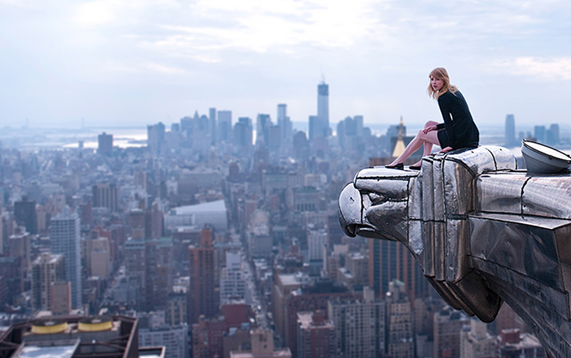We would like to monitor how you interact with this website so we may continue to improve it.

Lucinda Grange
Lucinda Grange exhibited ‘In From the Outside’ in 2013 at Hartlepool Art Gallery.
In celebration of International Women’s Day 2021 we will be revisiting some of the fantastic female artists we have had the pleasure to showcase in Hartlepool Art Gallery. We caught up with Lucinda Grange to see what inspires her and learn about what have been up to since exhibiting with us.
What inspires you/your work?
My work is inspired by our surroundings, mostly the urban and/or man-made elements in our environments. I try to experience and document the known in a different way, from lesser known angels and spaces.
What do you intend to get across through your work?
Through my work I try to encourage others to find new enjoyment from the places (they think) they know so well, to look at the world around them differently. I want to make the mundane commute to work, the school run or the mad dash to the supermarket feel different. I aim to spark joy in the times when we are usually moving about our city, town or village in overdrive: by making them look up, and wonder what the view would be like from the top of that pylon; or to look down, and wonder what labyrinth lies under the manhole cover they just stepped on.
What have you been up to since your exhibition with us?
My first solo exhibition was at Hartlepool Art Gallery, only a few months after graduating. I still see it as one of my greatest achievements and exhibitions. Since then I’ve climbed many more bridges and structures, and found my way into many underground spaces. And my work has been exhibited in solo and group shows from the @MuseumofLondon, to @AzartGallery, to @ArtLeadHer (a platform supporting and promoting only female artists, founded in Internationals Women’s day 2016), to @lorgalleryny, to @MuseumRijswijk (curated by denim artist @ianberry.art , where I currently have work on display), to name a few.
Who are your biggest female influencer’s in the art world or other?
I think Lee Miller would have to be my greatest influence to my photographic practice, but I’m also massively inspired by Latifa Metheny (founder of @azartgallery ) and @mashondatifrere (founder of @ArtLeadHer ) for their determination and dedication to providing a platform for female artists from across the globe, at all different levels in their careers.
What would you say to the next generation of female artists?
I would have to tell the next generation of female artists to not give up and keep pushing. Even one small step is movement in the right direction.
How, if anything, has your work changed over time?
My work, what I do, and how I approach the urban environment hasn’t changed much, but I’d like to think my skill level has improved over time. I sometimes go back over old work and cringe at how I originally edited my work. I’ve learnt a lot since my first solo show as Hartlepool Art Gallery!
Do you think societies attitudes have changed in relation to female artists over time?
Women no longer have to use pen-names in order to be recognized as talented creatives, there’s been so much improvement, but there’s still a long way to go. Female and non-binary artists take a very small percentage of wall space in museums and galleries, and are given even smaller percentage of the solo shows, yet go to any art college or institute, and usually males take the smallest percentage in the classroom. It doesn’t quite add up.
I think Lee Miller’s self-portrait in Hitler’s bathtub is so iconic and resonates with me and my work, especially my ‘Backwards and in High Heels’ project and self-portraits. She highlights the fact that she shouldn’t be where this photo was taken, by putting herself within the photograph. In this single image she really emphasized the beginning of the end of World War II, the weakness of Hitler by infiltrating his Munich home (where she then lived for a couple of months, at least until his suicide), as well as her strength as a journalist and as a woman. Miller really highlighted the strength and capabilities of women, not only in the photographic/photojournalism world, but also in dangerous environments such as war zones.